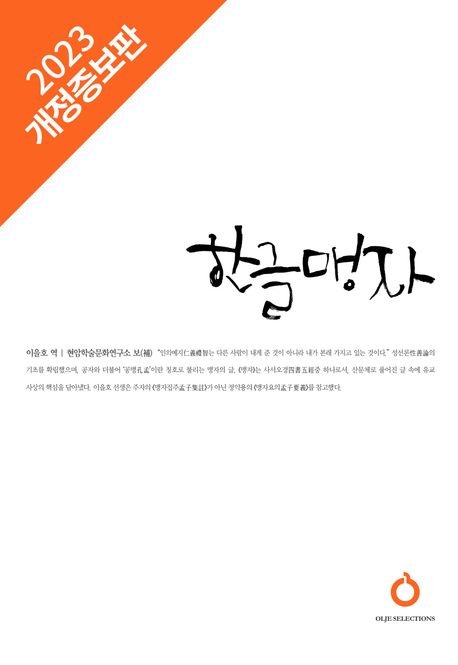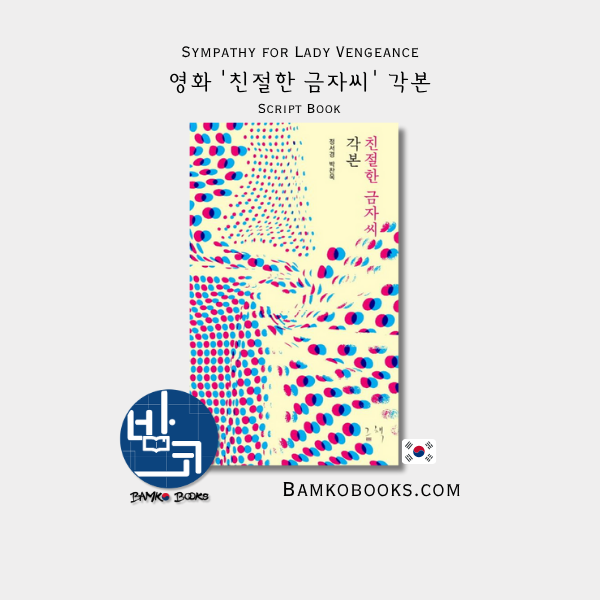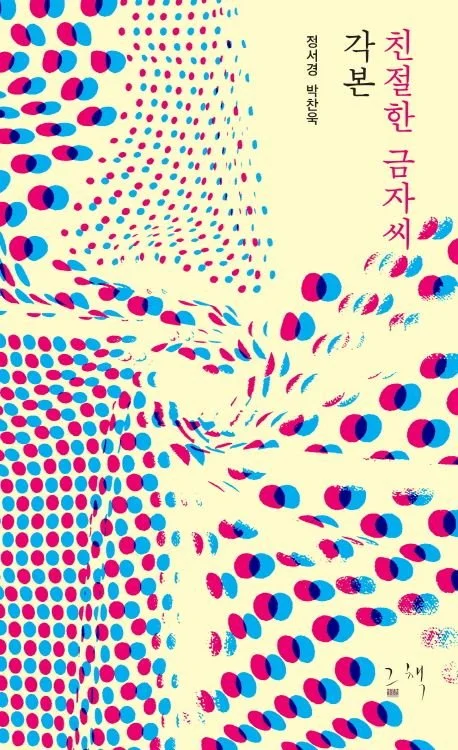<KR>
책 소개
제71회 칸 국제영화제 경쟁부문 진출작! (국제비평가연맹상, 벌컨상)
칸 영화제 역대 최고 평점! 《가디언》 선정 21세기 위대한 영화 100
“거인의 작품”, “아름답고 영화적이고 지적이다”, “세 주연의 훌륭한 연기, 탁월한 촬영, 독특한 음악 등 어느 면으로 보나 훌륭하게 만들어진 영화.”라는 극찬과 함께 제71회 칸 국제영화제에서 역대 최고 평점을 받은 이창동 감독의 여섯 번째 연출작 ‘버닝’(2018)의 각본집이 드디어 출간됐다. ‘버닝’은 무라카미 하루키의 단편소설 〈헛간을 태우다〉를 각색한 영화로 화제가 되기도 했으며, 그해 세계 유수의 영화제에서 최우수작품상을 잇달아 수상하는 등 전 세계 영화인의 이목을 집중시켰다.
이 책에는 오정미 작가와 이창동 감독이 공동 집필한 ‘무삭제 오리지널 시나리오’를 포함해 소설가 김연수의 추천사, 영화평론가 송경원의 평론과 인터뷰, 사회학자 김홍중의 에세이, 이 책을 통해 최초 공개되는 프랑스 영화학자 앙투안 코폴라와 이창동 감독의 특별 대담 등 다양한 텍스트를 수록해 ‘버닝’을 더욱 폭넓고 깊이 있게 느끼도록 안내해준다. 다양한 읽을거리 외에도 《버닝 각본집》에는 종수(유아인), 해미(전종서), 벤(스티븐 연)의 놀라운 연기를 다시금 떠올리게 하는 사진들, 촬영 현장의 다채로운 분위기를 느낄 수 있는 사진들(컬러/흑백), 미스터리가 펼쳐지는 영화 속 주요 공간들을 담은 사진 등 100여 컷에 달하는 현장 스틸을 수록해 소장 가치를 높였다.
출판사 서평
★ 제71회 칸 국제영화제 경쟁부문 진출작!
★ 칸 국제영화제 역대 최고 평점, 전 세계 100여 개 국가 상영!
★ 영국 《가디언》 선정 21세기 100대 영화!
★ 무라카미 하루키 단편소설 〈헛간을 태우다〉 영화화!
지적이고 농밀한 서사, 아름답고 섬세한 미스터리...
수수께끼 같은 세상 속 우리 시대 분노하는 청춘의 초상
더없이 강렬한 영화적 체험... ‘버닝’의 모든 것을 담아내다!
+ ‘버닝’ 무삭제 오리지널 시나리오, 오정미x이창동 작가 대담
+ 소설가 김연수 추천!
+ 영화평론가 송경원의 평론과 인터뷰, 사회학자 김홍중 에세이
+ 프랑스 영화학자 앙투안 코폴라와 이창동 감독 특별 대담
+ 100여 장의 현장 스틸(미공개 컷 포함), 작가 노트와 촬영 일지
+ 그리고 미공개 시놉시스와 트리트먼트까지!
제71회 칸 국제영화제에서 초연된 이창동 감독의 여섯 번째 연출작 ‘버닝’(2018)은 “거인의 작품”, “아름답고 영화적이고 지적이다”, “세 주연의 훌륭한 연기, 탁월한 촬영, 독특한 음악 등 어느 면으로 보나 훌륭하게 만들어진 영화.”라는 극찬과 함께 역대 최고 평점을 받으며 국제영화비평가연맹상과 벌컨상(미술)을 수상했다. ‘버닝’은 무라카미 하루키의 단편소설 〈헛간을 태우다〉를 각색한 영화로 화제가 되기도 했으며, 그해 세계 유수의 영화제에서 최우수작품상을 잇달아 수상하는 등 전 세계 영화인의 이목을 집중시켰다. 영국 일간지 《가디언》은 21세기 100대 영화 목록에 ‘버닝’을 포함시켰다.
《버닝 각본집》에는 오정미 작가와 이창동 감독이 공동 집필한 ‘무삭제 오리지널 시나리오’를 포함해 작가와 감독의 치밀한 주제의식, 제작 현장의 생생한 분위기, 영화 속 메타포들에 대한 충실한 해석 등 영화 ‘버닝’을 더욱 폭넓고 깊이 있게 느끼도록 안내해주는 글과 사진들이 풍성하게 수록되어 있다.
오정미, 이창동 두 작가의 대담, 그리고 프랑스 영화학자 앙투안 코폴라와 이창동 감독의 특별 대담은 영화와 세상에 대한 작가적 고민의 결을 깊이 있게 담아낸 글들이다. 특히 앙투안 코폴라와의 대담은 이 책을 통해 최초 공개되는 텍스트로, ‘버닝’에 관한 가장 심도 깊은 ‘감독 코멘터리’라 할 수 있다. 이창동 감독이 영화 속에 담아내려 한 우리 시대 청춘들의 분노와 상실감과 무력감, 오정미 작가의 제안을 통해 무라카미 하루키의 단편소설이 영화화된 과정, 캐릭터 창조와 영화 음악, 나아가 우리의 삶과 세상과 영화에 대한 이창동 감독의 짙은 사유의 흔적을 들여다볼 수 있다.
추천의 글을 쓴 소설가 김연수는 무라카미 하루키의 〈헛간을 태우다〉를 처음 읽고 나서 느꼈던 ‘메타포의 불꽃’과 한낮에 극장에서 ‘버닝’을 관람했던 기억을 떠올리며 “메타포의 불꽃이 어떻게 현실을 일으키고, 또 그 현실을 소멸시키는지”에 대하여, 시나리오를 읽으면서 다시 한번 느낀 경이로움에 대하여 이야기한다.
영화평론가 송경원의 평론은 각 장면들마다 상징적 요소들이 꼬리를 물고 이어지는 ‘버닝’ 속 메타포의 그물을 펼쳐놓고 영화가 말하고자 했던 것들, 그러나 동시에 미스터리라는 구조 속에 감춰둔 채 보여주지 않으려 했던 것들의 의미를 세밀하게 추적하고 탐색한다. 그는 “상징과 이미지의 연결들, 매혹적인 빈틈, 보이지 않는 것들의 존재감, 보여주지 않았음에도 머릿속에서 사라지지 않았던 것들”의 혼란을 통해서 우회적으로 ‘버닝’의 성취를 읽어낸다.
사회학자 김홍중의 에세이는 이창동 영화 속 인물들에서 상처 입은 채 온몸을 극단적으로 요동치며 꿈틀대는 뱀의 운동성, 은총을 갈망하는 인간의 절박하고 극대화된 운동성을 발견한다. 또한 ‘버닝’의 세 주인공 종수, 해미, 벤을 통해서는 ‘없음과 있음’, ‘많아짐과 적어짐’, ‘존재와 부재’, 나아가 ‘자본주의적 삶에 내재된 멜랑콜리’를 본다. 프로이트의 《꿈의 해석》에 나오는 한 장면으로 끝맺는 그의 글은 ‘버닝’이라는 문제적 영화 한 편을 통해 던져질 수 있는 질문의 외연이 얼마나 무한히 확장 가능한지 보여주는 듯하다.
이처럼 다양한 읽을거리 외에도 《버닝 각본집》에는 종수(유아인), 해미(전종서), 벤(스티븐 연)의 놀라운 연기를 다시금 떠올리게 하는 사진들, 촬영 현장의 다채로운 분위기를 느낄 수 있는 사진들(컬러/흑백), 미스터리가 펼쳐지는 영화 속 주요 공간들을 담은 사진 등 100여 컷에 달하는 현장 스틸을 수록해 소장 가치를 높였다.
“이 시대 청춘의 분노와 상실감은 어디서 오는가?”
“우리의 삶과 우리의 세상은 얼마나 진실에 가까운가?”
“우리가 할 수 있는 이야기란, 영화란 무엇인가?”
‘버닝’의 사그라들지 않는 불꽃처럼
영화와 세상에 대한 질문은 계속된다!
‘버닝’은 기획 당시 일명 ‘분노 프로젝트’라고 불렸다. ‘시’(2010) 이후 차기작을 준비하고 있던 이창동 감독은 전 세계에 만연한 분노 중에서도 특히 우리 시대 청년들의 분노에 주목하고 있었고, 오정미 작가는 무라카미 하루키의 단편소설 〈헛간을 태우다〉에 나오는 “아무 쓸모도 없는 헛간”을 불태운다는 구절에서 분노를 느꼈다.
아무 쓸모도 없는 것이 헛간이 아니라 사람이라면? 누군가를 아무 쓸모도 없다고 판정하고 없앨 수 있다는 발상 그 자체가 무섭고 화가 난다는 것이었어요. 오정미 작가는 그 ‘쓸모없는 존재’에 감정 이입이 된 거죠. 청년들은 자신이 ‘쓸모없다’는 판정을 받는 것을 두려워해요. 그래서 경쟁 사회라는 거대한 컨베이어 벨트 위에서 그들은 쉬지 않고 달려야만 해요. (...)
세상은 점점 세련되어지고, 편리하고, 멋있어지지만 개인의 삶은 점점 왜소해지고, 보잘것없어집니다. (...) 불평등이 점점 세련되어가는 거지요. 청년들은 뭔가 잘못되었다는 것을 알지만, 무엇을 어떻게 해야 할지, 싸워야 할 상대가 누구인지 몰라요. 그들에게 세계는 거대한 미스터리 같아요. 마치 이 영화 속의 벤이 연쇄 살인범인지 친절하고 마음씨 좋은 친구인지 구별이 안 되는 것처럼. 그래서 그들은 더욱 무력감을 느끼고 분노는 속에서 불타고 있지요. (이창동, 앙투안 코폴라와의 대담 중에서)
지금도 대다수의 청춘들은 자신의 쓸모없음을 판정받지 않으려고 쉼 없이 달리며 ‘靑春’이라는 그 이름처럼 살아가지 못하고 있다. 이토록 ‘세련되고 멋있어진’ 불평등한 현실에 가장 영화적인 방식으로 질문을 던진 ‘버닝’의 불씨가 여전히 살아 있는 이유다.
청춘의 분노와 무력감이 ‘버닝’의 한 축을 이룬다면, 또 다른 하나의 축은 서사와 영화에 관한 근원적 질문으로 구성되어 있다. 이것은 이창동 감독이 오랫동안 천착해온 문제의식으로 우리의 삶과 세상의 진실을 끊임없이 되물으며 ‘낯선 세계에 필요한 새로운 이야기’를 찾는 것에 대한 고민이다.
‘버닝’은 무모하게도 요즘 영화들의 흐름과 역행하는 영화죠. 단순하지 않고 복잡하고, 쉬운 답을 주지 않고 오히려 질문을 하죠. 벤은 과연 연쇄 살인범인가 아니면 그냥 친절하고 너그러운 부유한 친구인가? 해미는 어디로 갔는가? 그리고 난 그 질문이 서사에 대한, 그리고 영화에 대한 질문으로 확장되길 원했어요.
내가 보고 믿는 것이 과연 진실에 얼마나 가까운가. 내가 영화에서 보고 받아들이는 서사는 얼마나 삶과 세상의 진실에 가까운가? 내가 욕망하는 서사는 과연 무엇인가. 영화란 것이 과연 무엇인가? 나는 관객이 영화 속 인물의 감정을 자기 것으로 느끼면서도 동시에 영화와 거리를 두며 저절로 그런 질문을 떠올리게 되는 낯설고 흥미진진한 ‘영화적 경험’이 되기를 바랐죠. (이창동, 앙투안 코폴라와의 대담 중에서)
이창동 감독의 말과 비슷한 맥락에서 《스크린 인터내셔널》은 ‘버닝’에 대해 “놀라울 정도로 복잡하고 쉽게 이해되기를 거부하는 영화. 보면 볼수록 우리가 보고 있는 것을 확신할 수 없게 된다.”라고 썼다. 또한 영화 속에서 종수는 벤에게 이렇게 말한다. “나에게는 세상이 수수께끼 같아요.”
‘버닝’은 명료한 답을 제시해주지 않는다. ‘미스터리 스릴러’라는 장르적 외피를 쓰고 있지만, 그 관습을 따르지 않는 영화이기도 하다. 수수께끼처럼 관습에서 비껴 있고 속 시원한 답을 보여주지 않지만, 아름다운 장면들을 온몸으로 느끼며 각자의 입장에서 (답을 적기 위해 골몰하는 것이 아니라) 질문을 던진다면, ‘버닝’은 그 자체로서 흥미진진한 ‘영화적 경험’을 선사한다. 이 책 《버닝 각본집》이 ‘버닝’의 더없이 강렬한 영화적 체험을 다시 한번 느끼게 해줄 것이다.
‘버닝’ 줄거리
유통회사 알바 일을 하는 작가 지망생 이종수(유아인)는 배달을 갔다가 어릴 적 같은 동네에 살던 신해미(전종서)를 만난다. 그녀는 나레이터 알바 일을 하며 힘들게 모은 돈으로 곧 아프리카 여행을 떠난다면서 그동안 자신이 키우는 고양이에게 밥을 줄 것을 부탁한다. 얼마 후 종수가 여행에서 돌아오는 해미를 마중 나갔을 때, 그녀는 아프리카 여행 중에 만났다는 벤(스티븐 연)이라는 정체불명의 남자와 함께 나타난다. 어느 날 벤은 해미와 함께 종수 집으로 찾아와 자신에게는 버려진 비닐하우스를 태우는 비밀스러운 취미가 있다고 고백한다. 벤의 기묘한 비밀 이야기를 듣게 된 다음 날부터 종수는 불길한 예감에 사로잡혀 매일 아침 동네를 달리며 버려진 비닐하우스들을 확인하는 한편 벤의 뒤를 밟기 시작한다. 그러나 불에 탄 비닐하우스는 보이지 않고, 대신에 이상하게도 해미와 연락이 되지 않는다. 해미의 옥탑방은 깨끗하게 정리되어 있고 고양이의 흔적도 사라졌다. 벤은 종수에게 해미가 연기처럼 사라졌다고 말한다. 그러나 종수는 벤의 집에서 해미의 흔적들을 발견하게 되고, 벤의 정체에 대한 의심과 분노를 품은 채 뭔가를 결심한다.
[ENG]
Book Introduction
The 71st Cannes International Film Festival competition! (International Federation of Criticians Prize)
The best rating of all time at the Cannes Film Festival! The Guardian's Top 100 Great Movies of the 21st Century
“The work of a giant”, “Beautiful, cinematic, and intelligent”, “a film that has been made in some ways as well as excellent acting, excellent shooting, and unique music in the three main characters.”At the 71st Cannes International Film Festival, the sixth edition of "Burning" (2018) was finally released. "Burning" was the theme of Murakami Haruki's short novel, Burning the Canyon, and focused on the achievements of filmmakers from all over the world, including winning the Best Work Award at the world's leading film festivals.
The book contains a variety of texts, including the unchecked original scenario written jointly by the writer O'Yong-mi and the director, the recommendation by the novelist Kim Yong-su, the reviews and interviews of the film critic Song-kyun, the essays of the sociologist Kim Hong Zhen, the first French film scientist Antoine Coppola and the special address of the director of the novel, which will lead you to feel the burning more broadly and deeply. In addition to a wide range of readings, the "Burning Scenic Collection" contains more than 100 pieces of field steel, including photographs of the youth, Hammy, and Ben (Stephen Young), which remind us of the amazing performances of the film, the colourful atmosphere of the scene (color/black/white), and the main spaces of the mystery in the film.
Publisher Yoshin
★ The 71st Cannes International Film Festival competition!
★ Cannes International Film Festival, the highest rating ever, showcased in more than 100 countries around the world!
The Guardian is the 100th Greatest Movies of the 21st Century!
♪ Murakami Haruki short novel ♪ Burning the crap ♪
Intelligent and concise narrative, beautiful and delicate mystery...
A portrait of the angry youth of our time in a mysterious world.
No more intense cinematic experience... Everything about Burning!
+ 'Burning' Unchecked Original Scenario, Written by O'JongMix
+ Recommended by the novelist Kim Jong-un!
+ Review and interview by film critic Song Gong, essay by sociologist Kim Hong Zhen
+ Speech with French film director Antoine Coppola
+ More than 100 field steels (including unpublished cuts), writer notes and shooting diaries
+ And unpublished symphonies and treatments!
The sixth film, "Burning" (2018) was premiered at the 71st Cannes International Film Festival. It was "a work of giants", "beautiful, cinematic and intellectual", "a film that has been made well in some respects, including a great performance of three main actors, excellent filming, and unique music."He was awarded the International Film Critics' Union Prize and the Art Award. "Burning" was the theme of Murakami Haruki's short novel, Burning the Canyon, and focused on the achievements of filmmakers from all over the world, including winning the Best Work Award at the world's leading film festivals. The British daily "The Guardian" included "Burning" on the list of the 100 greatest films of the 21st century.
The "Burning Scenario" contains an abundance of articles and photographs that help you to feel the burning in a broader and deeper way, including a "unchecked original scenario" co-written by the writer and the director, including the artist's and director's thorough consciousness of the subject, the vibrant atmosphere of the production scene, and a faithful interpretation of the metaphors in the film.
The two authors' talks and the special talks between the French film scientist Antoine Coppola and the director of the film are a profound summary of the writer's concerns about film and the world. In particular, his conversation with Antoine Coppola is the first published text in the book, the most in-depth "supervisory commentary" on "Burning". Through the anger, loss and powerlessness of the youth of our time, which the director tried to embrace in the film, the proposal of the writer O'Jonami allows us to explore the process of filming Murakami Haruki's short novel, the creation of characters and film music, and the dark sense of the director's life and the world and the film.
Recommendation writer Kim Yoon-shu recalls the memories he felt after reading Murakami Haruki's "Fire of Metaphor" for the first time, and when he watched "Burning" in the theater in the middle of the day, he talks about "how the flame of metaphor creates reality, and also destroys that reality", and about the wonder he felt once again when he read the script.
The film commentator Song Jian's commentary traces and explores in detail what the film wanted to say, but at the same time hidden in the structure of the mystery, with symbolic elements clinging to the tail and unfolding a network of metaphors in "Burning". He reads the accomplishment of Burning in a perpendicular way through the confusion of "connections of symbols and images, fascinating gaps, the presence of the invisible, and the things that didn't disappear in the mind without showing them."
The essays of sociologist Kim Hongzong in the film reveal the desperate and maximized mobility of the serpent, human desire for grace. Through the three main characters of "Burning", Hammi and Ben, we see "Nothing and Being", "Many and Few", "Being and Absence", and "Melancholy inherent in capitalist life". His article, which ends with a scene in Freud's "The Interpretation of Dreams", seems to show how infinitely expansive the appearance of questions that can be thrown through a problematic film called "Burning".
In addition to such a wide range of readings, the Burning Scenic Collection has increased its value by collecting more than 100 pieces of field steel that reminds us of the amazing plays of Shunju, Hammi, and Ben (Stephen Yoon), photographs that can feel the colorful atmosphere of the scene (color/black/white), and photographs of the main spaces in which the mystery unfolds in the film.
“Where does the anger and loss of youth come from?”
“How close are our lives and our world to the truth?”
"What can we tell, what is a movie?"
It's like a burning flame that doesn't burn.
The questions about the film and the world continue!
Burning was called the Anger Project at the time of planning. In the midst of the wrath that has spread all over the world, the director, who was preparing his next film since "Shi" (2010), has been paying attention to the anger of the young people of our time, and the writer has felt anger when he says he is burning a "nothing-needed hole" from Murakami Haruki's short novel "Burning a hole".
What if it's not nothing that's useless, but people? It was frightening and angry to think that someone was useless and could be eliminated. The writer has become an emotional influence on that useless being. Young people are afraid of being judged to be useless. So on a giant conveyor belt called a competitive society, they have to run without rest. (...)
The world is becoming more sophisticated, convenient and cool, but the personal life is getting more and more distorted, impeccable. (...) Inequality is becoming more and more sophisticated. Young people know something's wrong, but they don't know what to do, who to fight. To them, the world is a huge mystery. It's as if Ben in this movie is a serial killer or a kind, good-hearted friend. So they feel even more helpless and the anger is burning in them. (During his conversation with Antoine Coppola)
Even now, the majority of young people are running relentlessly to avoid being judged as useless and are not living as they call themselves. That's why Burning's phantom is still alive, asking questions in the most cinematic way about the uneven reality that has become so "stylish and cool."
If the anger and powerlessness of youth form one axis of burning, the other axis consists of fundamental questions about storylines and films. This is the challenge of finding “new stories needed in a strange world” in order to constantly identify our lives and the truth of the world with the problem-consciousness that the director has been slowing down for a long time.
"Burning" is a film that is reversing the flow of movies these days. It's not simple, it's complicated, it doesn't give an easy answer, it asks questions. Is Ben a serial killer, or is he just a nice, generous, rich friend? Where did Hammi go? And I wanted that question to be extended to questions about the story, and about the movie.
How close to the truth is what I see and believe. How close is the narrative I see and accept in movies to the truth of life and the world? What is the story I desire? What is a movie? I wanted it to be a strange and exciting "movie experience" where the audience would feel the feelings of the characters in the movie as they were, but at the same time distancing them from the movies and reminding them of such questions. (During his conversation with Antoine Coppola)
In a similar context to this, "Screen International" describes Burning as "an incredibly complex and easy-to-understand film. The more we see it, the more we can't be sure of what we're seeing."I wrote it. Also in the film, the sergeant tells Ben: "For me, the world is a mystery."
"Burning" does not offer a clear answer. It's a genre film called "Mystery Thriller", but it's also a film that doesn't follow that custom. As a riddle, "Burning" offers an exciting "filmic experience" in itself, if you don't show a customary and cool answer, but if you feel the beautiful scenes wholeheartedly and ask questions from each one's point of view (instead of stumbling around to write the answer). The book "Burning Scenes" will make you feel the intense cinematic experience of Burning once again.
"Burning" plot
A writer who works for the distribution company Alva, Shinjuku Yitong-shou (Young Man) goes on a delivery trip and meets Shinhami (Generic Book) who lived in the same village as he was when he was a child. She works as a narrator and asks her to feed the cats she raises while she is on a journey to Africa with the hard money she has gathered. A short while later, when the sergeant is leaving her home from a journey, she appears with an unidentified man named Ben (Stephen Young), whom she met on a trip to Africa. One day Ben and Hammi come to the farmhouse and confess that he has a secret hobby of riding an abandoned vinyl house. From the day after he hears Ben's strange secret story, the sergeant is caught up in an unfortunate feeling and runs through the neighborhood every morning to check out abandoned vinyl houses as he begins to step behind Ben. However, the burning vinyl house is not visible, and strangely enough, there is no contact with Hammi. Hammi's roof room was cleaned up, and the cat's traces disappeared. Ben tells the sergeant that the hammer has disappeared like smoke. But when he finds traces of hammer in Ben's house, he decides to do something with doubts and anger about his identity.
<FR>
Introduction au livre
Le 71e Festival International du Film de Cannes! (Prix de la Fédération Internationale des Critiques)
La meilleure note de tous les temps au Festival de Cannes! Les 100 meilleurs films du 21e siècle du Guardian
"L'œuvre d'un géant", "Belle, cinématographique et intelligente", "un film qui a été réalisé d'une certaine manière ainsi qu'une excellente comédie, un excellent tournage et une musique unique dans les trois personnages principaux".Au 71e Festival International du Film de Cannes, la sixième édition de "Burning" (2018) est enfin sortie. « Burning » était le thème du court roman de Murakami Haruki, Burning the Canyon, et mettait l'accent sur les réalisations de cinéastes du monde entier, notamment en remportant le prix du meilleur travail aux principaux festivals du film au monde.
Le livre contient une variété de textes, dont le scénario original non contrôlé écrit conjointement par l'écrivain O'Yong-mi et le réalisateur, la recommandation de la romancière Kim Yong-su, les critiques et interviews du critique Song-kyun, les essais du sociologue Kim Hong Zhen, le premier cinéaste français Antoine Coppola et l'adresse spéciale du réalisateur du roman, qui vous amènera à ressentir le feu plus largement et plus profondément. En plus d'un large éventail de lectures, la "Collection panoramique brûlante" contient plus de 100 pièces d'acier de campagne, dont des photos des jeunes, Hammy, et Ben (Stephen Young), qui nous rappellent les performances étonnantes du film, l'ambiance colorée de la scène (couleur/noir/blanc), et les espaces principaux du mystère dans le film.
Éditeur Yoshin
★ Le 71e Festival International du Film de Cannes!
★ Festival international du film de Cannes, la plus haute note jamais vue, présentée dans plus de 100 pays du monde!
The Guardian est le 100e meilleur film du 21e siècle !
♪ Murakami Haruki court roman ♪ Brûlant la merde ♪
Une narration intelligente et concise, un beau et délicat mystère...
Un portrait de la jeunesse en colère de notre époque dans un monde mystérieux.
Plus d'expérience cinématographique intense... Tout sur Burning !
+ Scénario original « Brûler » non contrôlé, écrit par O'JongMix
+ Recommandé par le romancier Kim Jong-un !
+ Revue et interview du critique de cinéma Song Gong, essai du sociologue Kim Hong Zhen
+ Discours avec le réalisateur français Antoine Coppola
+ Plus de 100 aciers de terrain (y compris les coupes non publiées), des notes de rédaction et des journaux de tournage
+ Et des symphonies et des traitements inédits !
Le sixième film, "Burning" (2018) a été créé au 71e Festival International du Film de Cannes. C'était "une œuvre de géants", "beau, cinématographique et intellectuelle", "un film qui a été bien réalisé à certains égards, dont une grande performance de trois acteurs principaux, un excellent tournage, et une musique unique.« Il a reçu le prix de l'Union internationale des critiques de films et le prix de l'art.

















































